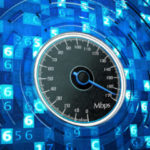 The event is over. Survey and tracking data are in. So, what do you do with all of that information?
The event is over. Survey and tracking data are in. So, what do you do with all of that information?
Bear Analytics founder Joe Colangelo would probably advise you to try not to feel overwhelmed — even if you are swimming in data. “As events and event organizers adopt newer and more cutting-edge technologies, the flow of information is larger, the quality of the data is higher, and it’s coming from more places than it ever has in the past,” Colangelo said in the latest installment of The Intersection, presented by PCMA and PSAV. Despite the variety and volume of data you are able to collect, Colangelo said that there are concrete steps you can take to get your arms around it.
And the effort, he said, will pay off. “Event organizers put so much of their time, energy, and hearts into crafting these really awesome event and attendee experiences. Why not go a little step further and make sure that you’re able to maximize your opportunity?”
At his company, Bear Analytics — a Washington, D.C.–based consultancy that provides data insights to event organizers, associations, and nonprofits — Colangelo has come to think of data as a meeting’s DNA. “We have yet to find two events that collect the same type of information, where the attendees behave the exact same way,” he said. And as badge scans have evolved to beacon technology, and surveys become more nuanced, data has become ever more sophisticated. “It’s what makes the event the event, and oftentimes it really supplements the gut instinct that those managers and professionals know about their event,” Colangelo said. “You’re able to tease out insights from it that were never possible.”
How do you do that? You can start with a data map, as Colangelo outlines below.
It’s also important not to let your data languish. “We’re all guilty of, ‘we don’t do anything with our data,'” said Dean Martin, CMP, senior marketing manager for Microsoft and experience ambassador of Microsoft’s annual 15,000-attendee Worldwide Partner Conference (WPC). “In the last few years, we’ve been trying to figure out and map our event objectives, to make a bigger effort to get better at the data we’re collecting.”

WPC achieves that via pre- and post-event surveys and using RFID or Bluetooth to track attendees throughout the event — especially the sessions they attend and when they arrive and leave those sessions. That ensures that Martin and his team “are tailoring the experience to them based on who they are,” he said. “The more you can get on your attendees’ preferences, the better it is. It’s not just about collecting [data] to use to your advantage — it’s really figuring out how that data on your attendees can improve on their experience.”
That includes letting attendees opt out of tracking. “Because we’re Microsoft, we need to be very careful about what we’re doing,” Martin said. “What is the best technology approach for our needs? It’s getting a handle on what works best for your audience.”
Tips on Working With Data
Colangelo offers these tips for meeting professionals:
- The more technology we adopt, the better serving data becomes.
- Transactional data gives a richer sense of information and makes up an event’s DNA.
- Data collection is typically secondary to the primary use of the technology (e.g., event mobile app).
- Determine what information is currently available and decide what needs to change about it.
- Create a data map — it’s free online (with tools such as OpenHeatMap).
Watch the latest Intersection video at pcma.org/theintersection



